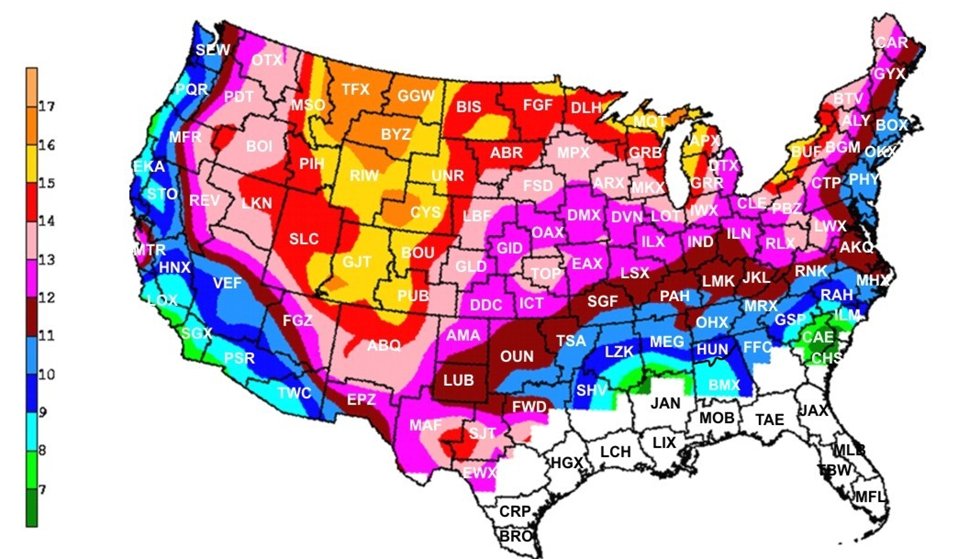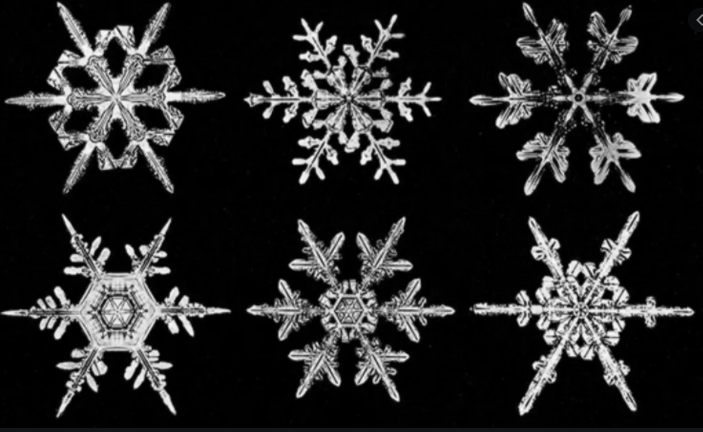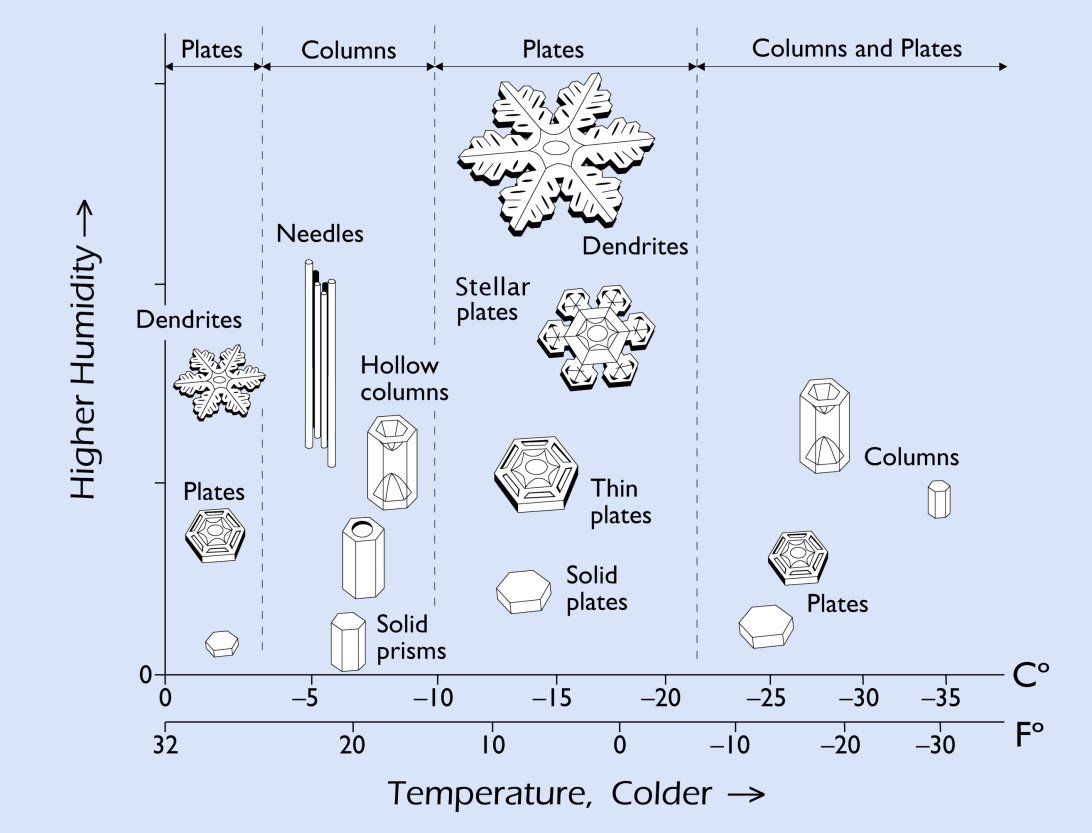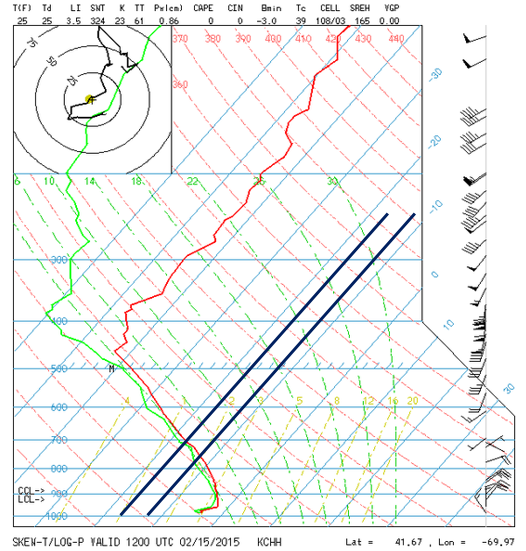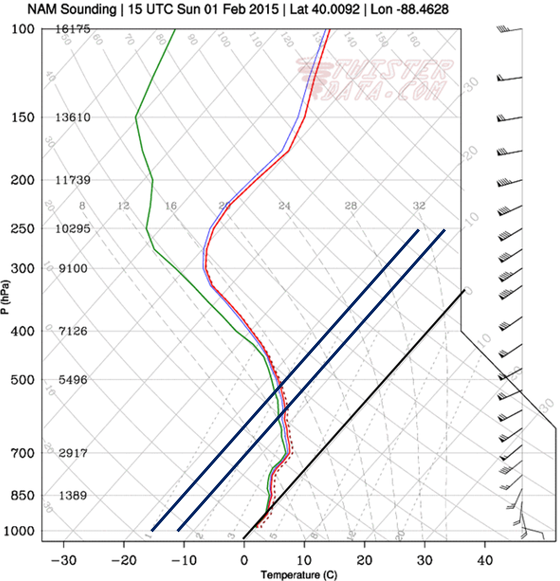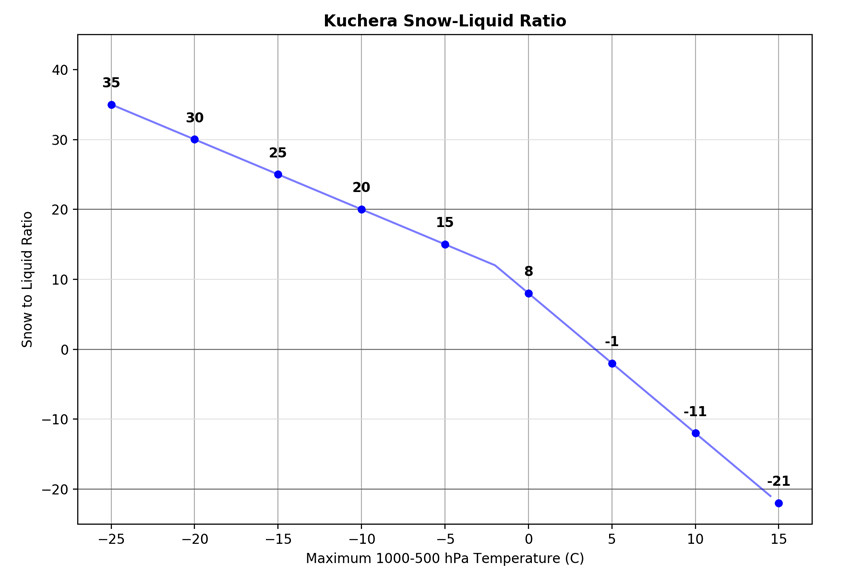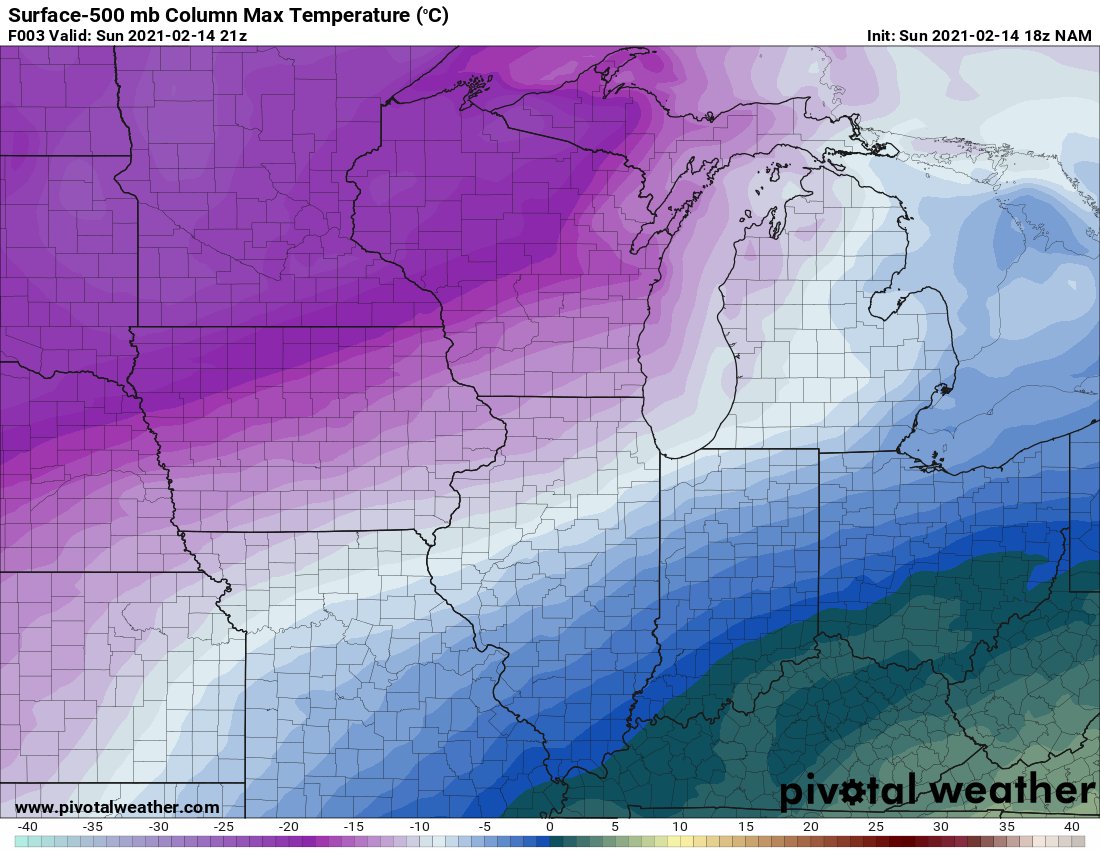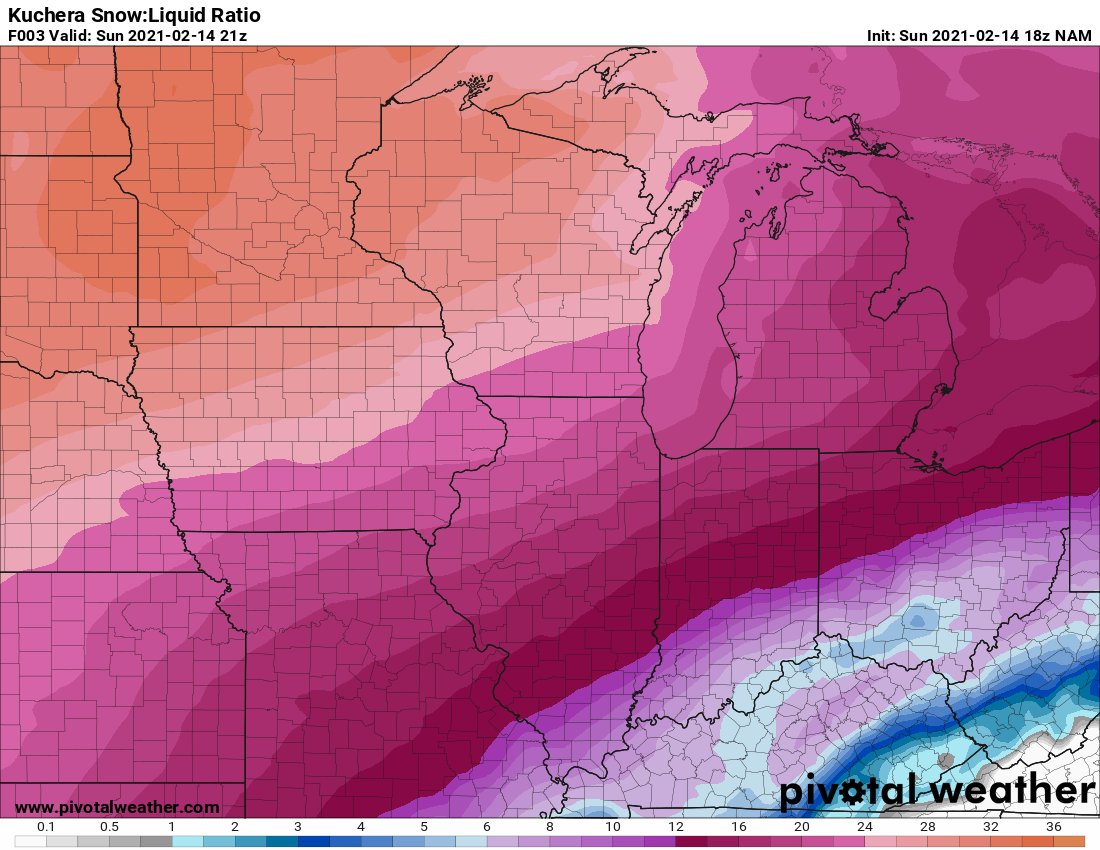Thread on snow ratios. The snow ratio, or snow-to-liquid ratio states how many inches of snow, when melted, yields one inch of liquid water. Ratios are usually around 10:1 or 12:1, but can vary from as little as 6:1 or as high as 30:1, or sometimes more. 1/
There's a common misunderstanding that the colder the surface temp is, the higher the snow ratio will be (fluffier snow). This is incorrect. As long is the surface temp is not close to freezing, it really doesn't matter all that much. 2/
As the surface temp gets close to or exceeds freezing, more snow is lost to melting, yielding lower ratios and heavy, wet snow. The same reasoning also applies to temps above the ground; if they exceed freezing, sleet or rain can mix with the snow, dramatically lowering ratios 3/
Much more important is the dendritic growth zone (DGZ), the layer of the atmosphere with temperatures between -12 and -18C. In this layer, snowflakes grow as dendrites, which can easily clump together into aggregates, which contain a lot of air, increasing the ratio 4/
At warmer or colder temps, the flakes grow as plates, columns, or needles, which don't clump together as well and contain less air, lowering the ratio. To make this even more complicated, there's also a dependence on atmospheric humidity. 5/
Ratios are maximized for
1) Large upward motion in the DGZ, which depends on the forcing for ascent and the stability of the DGZ and
2) A deep DGZ
6/
1) Large upward motion in the DGZ, which depends on the forcing for ascent and the stability of the DGZ and
2) A deep DGZ
6/
These two factors often oppose each other, however, because a deep DGZ means that this layer is very stable and requires more forcing to get the same amount of ascent. If the DGZ is shallower, it is less stable, and less forcing is required to produce ascent. 7/
One scenario that leads to high ratios is a shallow DGZ characterized by steep lapse rates in the presence of strong forcing for ascent. There are often steep lapse rates throughout the troposphere too. This is often the case in thundersnow scenarios 8/
A second scenario that leads to high ratios is a deep DGZ (meaning that it is very stable), with steeper lapse rates and ascent above it. In this case, the snowflakes grow as dendrites and aggregate on the way down. 9/
Snowflakes fall at an average of 1 m/s, meaning that if the DGZ is 3 km deep, these flakes experience almost an hour of dendritic growth on the way down. 10/
An example leading to low ratios is modest lapse rates in the DGZ (the in-between scenario), and surface temperatures near freezing 11/
The Kuchera ratio method attempts to account for melting or mixing when the temp is near freezing, but only accounts for column-max T and doesn't consider the DGZ at all. Here's the equation and graph, courtesy of @burgwx.12/
Thus, on maps, the patterns of column-max temp and Kuchera ratio always follow identical patterns 13/
Although Kuchera is certainly an improvement on a static 10:1 ratio, my experience is that the Kuchera ratio is too high in marginal snowfall regimes when melting/mixing is important, and also in very cold regimes (column-max T < -20C) because the DGZ doesn't even exist! 14/
. @capecobb developed this chart

 Read on Twitter
Read on Twitter